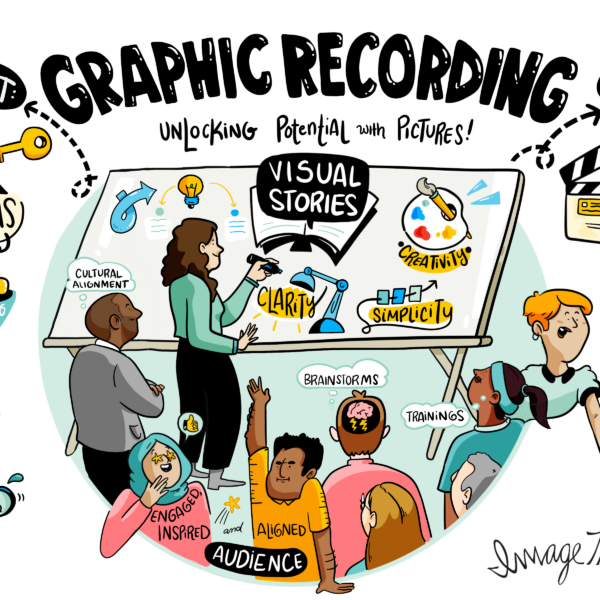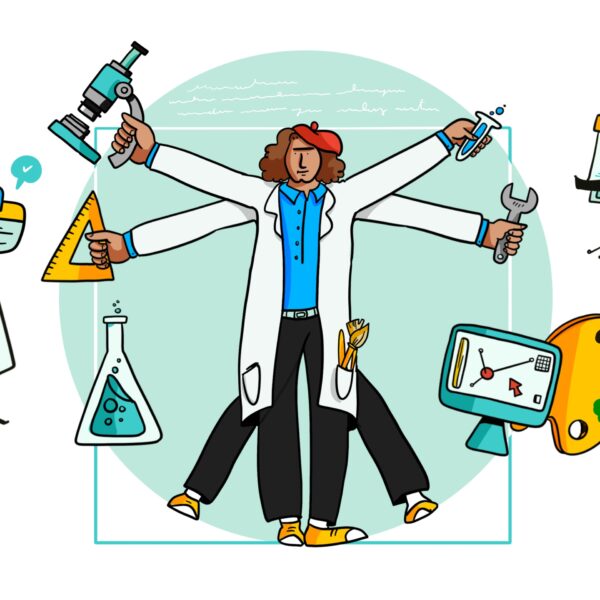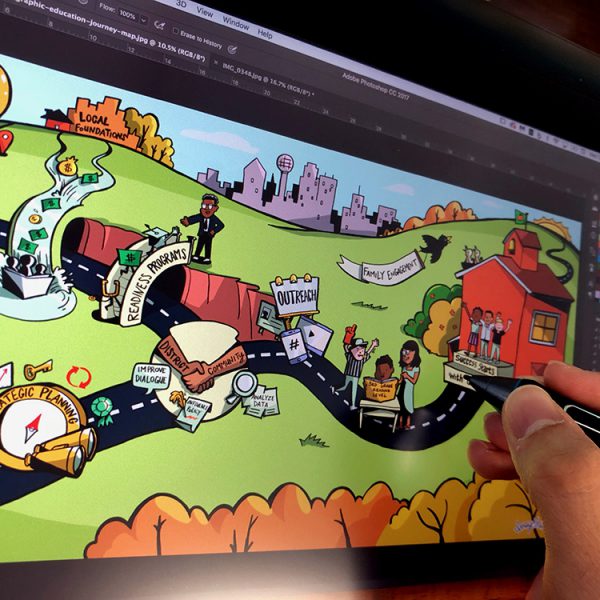The road to patient centricity starts here
The life sciences are a dynamic landscape, characterized by rapid innovation, interdisciplinary collaboration, and above all, patient centricity. In this space, understanding the patient journey isn’t just insightful – it’s imperative. That’s why, for the last 15 years, ImageThink has helped clients in the life sciences map and tell the stories of the patients they serve through patient journey mapping.
Patient journey mapping brings the patient voice to the forefront. Through this form of visual storytelling, ImageThink visualizes patient narratives thoughtfully, and sensitively to accurately reflect the patient experience. Visualizing this journey with ImageThink offers a multitude of benefits and helps dictate life science strategies and innovations that prioritize patient-centric care.
What is a patient journey map?
A patient journey map is a visual representation of a patient’s experience. It outlines every touchpoint and interaction the patient has, highlighting key stages, treatments, feelings, aspirations, and pain points. More often than not, a patient journey map is developed to explore the experiences surrounding diagnosis and treatment, but patient journey maps are versatile. ImageThink has made patient journey maps to help clients examine the drug development process, uncover frustration in receiving medications, and to identify resources and relationships between HCPs, caretakers, and patients.
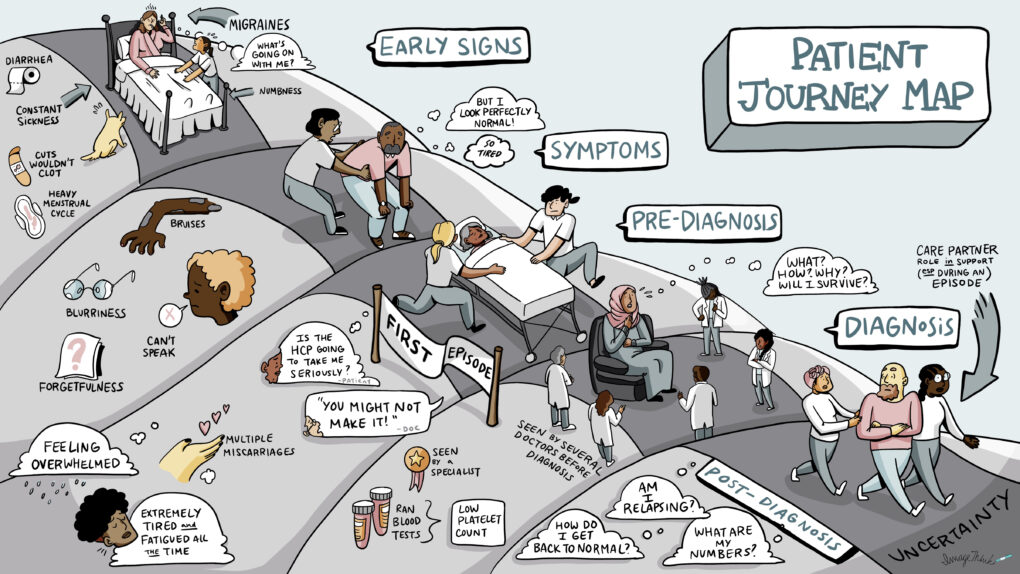
The benefits of patient journey mapping
Patient journey mapping has a myriad of benefits, including its ability to foster understanding of the patient perspective and experience, and to ultimately improve the quality of care delivered. We’ll expand on those benefits and uncover more below.
1. Real patient engagement
Patient-centric strategies and finding ways to involve patients in their care are ever-increasing in the life science space. Patient journey mapping facilitates and improves patient engagement, empowering patients to play an active role in the care they receive.
Having a patient journey mapping session on its own demonstrates empathy and showcases a commitment and willingness to understand the patient. It signals that you care about their input and experience. Accordingly, you build trust and strengthen relationships of all involved parties.
2. Deep understanding of the patient experience
Visualizing patient narratives uncovers insights directly from the patient. While it provides a detail-rich analysis of their experience, it also helps reveal challenges at each stage, like unmet needs and treatment gaps. Covering these angles create comprehensive understanding that empowers HCPs and caretakers alike to optimize the care patients receive, ultimately leading to deeper patient engagement and satisfaction.

On the other hand, the insights derived from patient journey inform patient-centric strategies. Patient journey maps frequently guide product development, marketing, and distribution. We know this firsthand from our clients’ use of our work post-engagement, but also from research by those who work in the life sciences. According to BMC Health Services Research, placing the patient at the center of efforts has demonstrated effectiveness in improving patient experience, trust, care quality, chronic disease management, and outcomes.
3. Enhanced communication and education
Patient journey maps are invaluable as health literacy and patient education materials. In the life sciences, where information and the distribution of it is vital, patient journey maps ensure that information is clarified, can be shared at scale, and with speed. Whether made to document, or to start or add to a dialogue, building awareness and improving communication is a direct outcome of patient journey mapping.
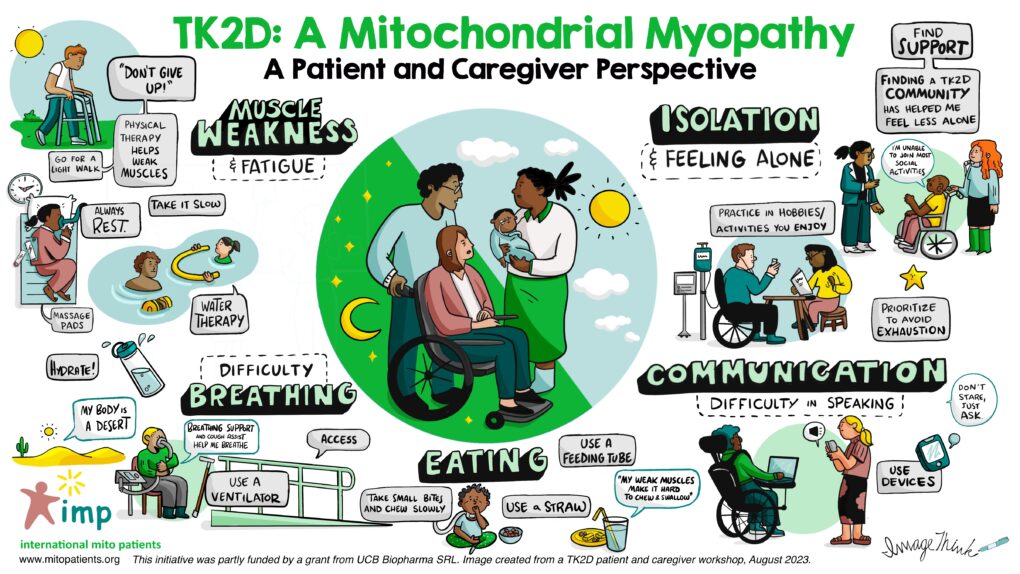
It’s not just the documentation that’s valuable. Capturing patient perspectives and experiences ensures information shared is timely and relevant. The visual component helps arrange and depict key insights in an engaging manner to help the viewer retain more information. It immediately resonates and is understood.
4. Increased innovation and improved product development
As a direct result of patient journey mapping, opportunities to innovate emerge. Hearing from and capturing patient experiences has the unique ability to identify areas where organizations, HCPs, and care takers can improve, add new value, or set new standards. Patient journey mapping frequently guides developments in drug formulations, treatment, digital health solutions, and beyond. Correspondingly, a patient’s journey is made more manageable and satisfactory.
5. Facilitated cross-functional collaboration
Humans are inherently wired to absorb and understand visuals. For this reason, visuals have the ability to transcend barriers. This enables patient voices of different regions and languages to be hard and makes patient education materials distributable and accessible. From an organizational standpoint, it unifies cross-functional collaboration.
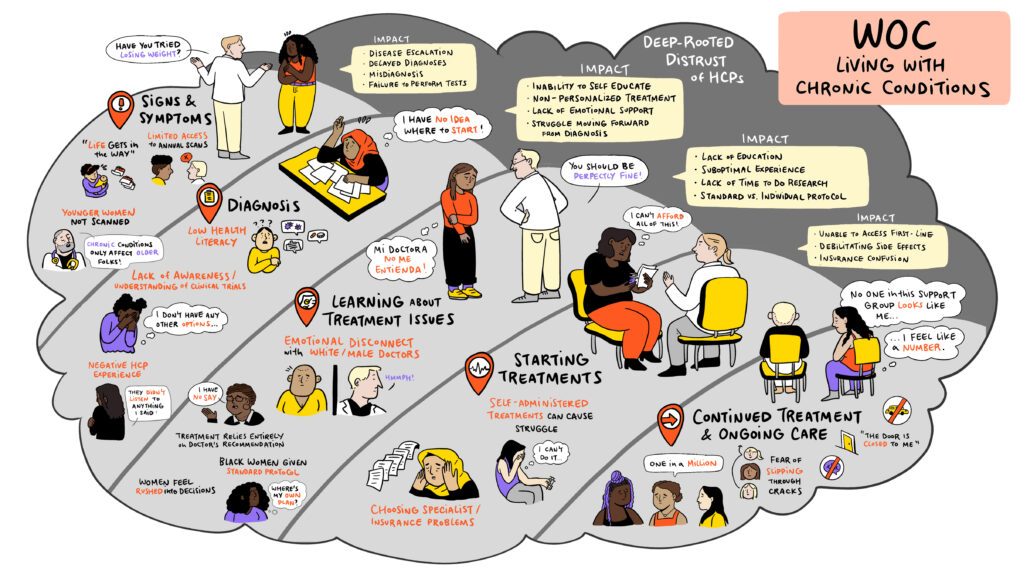
Translating the patient experience into a visual representation helps break through communication walls, defining a sense of shared understanding between key stakeholders. With a clarified image of the patient journey, efforts are more easily aligned to address patient needs and pitfalls. As a result, a well-balanced healthcare ecosystem emerges.
Your patients have a story.
Patient journey mapping moves understanding to action
It’s true that a large aspect of the benefits of patient journey mapping stem from enhanced understanding. ImageThink’s patient journey mapping has fostered shared understanding between patients, caretakers, and organizations like Johnson & Johnson, AstraZeneca, Pfizer, and more.
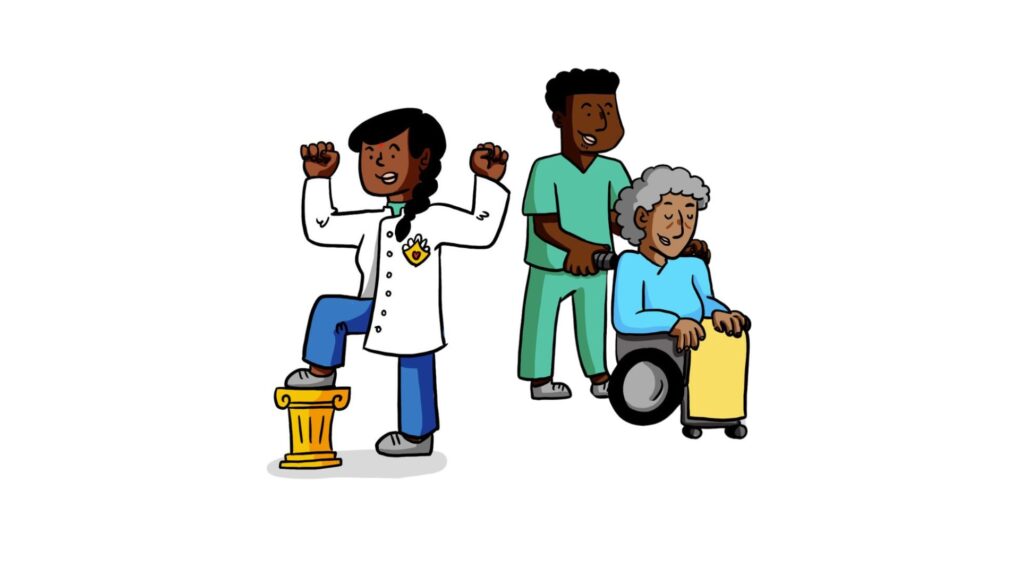
But patient journey mapping isn’t solely about understanding, rather, it’s about what you do with that understanding. With an ImageThink patient journey map in hand, our clients drive transformative change to deliver patient-centric care. That makes the world of a difference in the lives of their patients.
